Then this is the best place to be and get all the information you need before you get there, from this great online guide.
Any visitor going to Athens, this beautiful ancient city, will naturally visit the Acropolis and its well-preserved marble structures,which is a must-see while in Athens. It is a nice hike from the base up to the top where you can see the ruins.
The views from the top are phenomenal and you can catch a nice breeze on a hot day . Also in August, several archeological sites in Greece stay open late for a full moon festival and if you are fortunate enough to be there on that time, you’ll have the opportunity to visit the Acropolis and the Parthenon under the light of the moon, while being surounded by various classical musicians and opera singers.
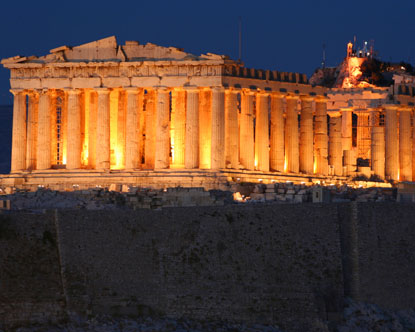 Parthenon: The most Holy Temple
Parthenon: The most Holy TempleThe architects Iktinos and Kallikrates are mentioned in History as the creators of Parthenon, the most famous greek temple, which was built in honour of Goddess Athena, the protector of the city of Athens.Admission to all participating sites is usually free and the public may visit from 7 pm to 1:30 am while some sites close as late as 3 am.
The New Acropolis Museum
Located at the foot of the Acropolis, the modern museum's five-stories of exterior glass walls reflect images of the Parthenon and surrounding ruins. The museum is the new home for hundreds of statues from the Archaic and Classical eras, but the Parthenon Gallery on the top floor is the museum's showcaseThe Acropolis Museum is an archaeological museum focused on the findings of the archaeological site of the Acropolis. The museum was built to house every artifact found on the rock and on its feet, from the Greek Bronze Age to Roman and Byzantine Greece. It also lies on the archaeological site of Makrygianni and the ruins of a part of Roman and early Byzantine city.It opened to the public on June 21, 2009. Nearly 4,000 objects are exhibited over an area of 14,000 square metres.
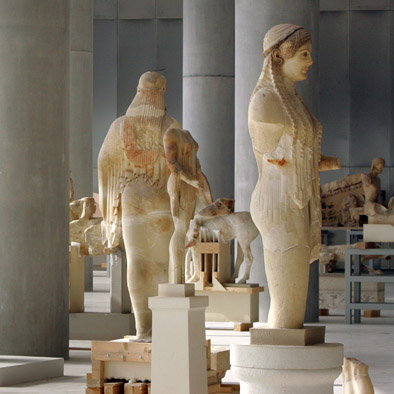
The Ancient Agora of Athens
The agora had private housing, until it was reorganized by Peisistratus in the 6th century BC. Although he may have lived on the agora himself, he removed the other houses, closed wells, and made it the centre of Athenian government. He also built a drainage system, fountains and a temple to the Olympian gods. Cimon later improved the agora by constructing new buildings and planting trees. In the 5th century BC there were temples constructed to Hephaestus, Zeus and Apollo.The agora in Athens again became a residential area during Roman and Byzantine times.
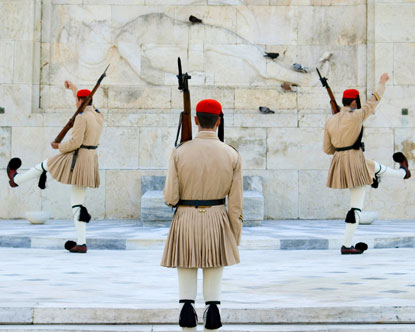 The changing of the Presidential Guards
The changing of the Presidential GuardsThe Tomb of the Unknown soldier is in memory of all the anonymous Greek soldiers that have fallen in the battlefield- in front of the Parliament is a monument where Greek officials and visiting dignitaries lay wreaths on major holidays. It bears an inscription with the Funeral Speech of Pericles.
The National Garden
The National Garden is a peaceful, green refuge of 15.5 hectares in the center of the Greek capital. It is located directly behind the Greek Parliament building and continues to the south to the area where the Zappeion is located, across from the Panathenaiko or Kalimarmaro Olympic Stadium of the 1896 Olympic Games.The Garden was once the private garden of the palace - a project of Queen Amalia in the 1840’s. For the kids there is a small zoo housing domestic animals, a few ostriches and a playground.The Royal Garden was commissioned by Queen Amalia in 1838 and completed by 1840. It was designed by the German agronomist Frederick Schmidt who imported over 500 species of plants and a variety of animals including peacocks, ducks, and turtles. Unfortunately for many of the plants, the dry Mediterranean climate proved too harsh and they did not survive; animals continue to thrive. The upper garden, behind the Old Palace, was fenced off and was the private refuge of the King and Queen. The entry is free to the public.
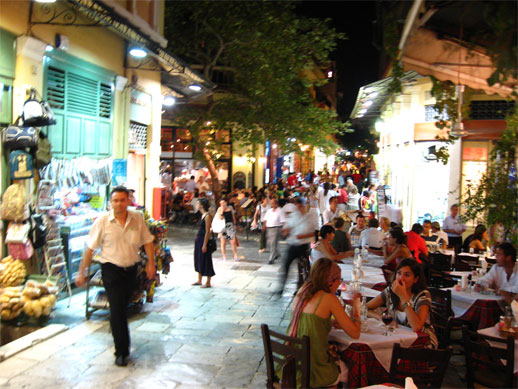 Plaka is the oldest section of Athens where the most of the streets have been closed to automobile traffic. Although it is quite commercialized it is still a neighborhood and arguably the nicest neighborhood in the city center.
Plaka is the oldest section of Athens where the most of the streets have been closed to automobile traffic. Although it is quite commercialized it is still a neighborhood and arguably the nicest neighborhood in the city center.Plaka originates from the days of the Greek revolution. Under the Acropolis Plaka was built by the first construction workers that come from Anafi cycladic island and built the main buildings. The settlement of Anafiotika was created in the 19th century. They built their houses on the steep slopes of the Acropolis in their traditional island style. Thus, they created a small village with white-washed houses and narrow paths between them. The village comes complete with a tiny church dedicated to St George. A closer look will reveal that the marble used for the construction of the church was taken from an ancient temple. Today is the main touristic attraction.
Benaki Museum
The Benaki Museum's extensive collection and neo-classical mansion setting make the Benaki Museum one of the premier museums in Athens.The Benakis family was a prominent Greek family who maintained their wealth after the 1921 Greek War of Independence. The Benaki Museum was established in 1929, the year Emmanouil Benakis died. Born in Syros, Greece in 1843, Emmanouil would eventually become the mayor of Athens, after beginning political life in 1910The Benaki Museum can easily be accessed from Syntagma Square, the heart od Athens where the Parliament Building is located.
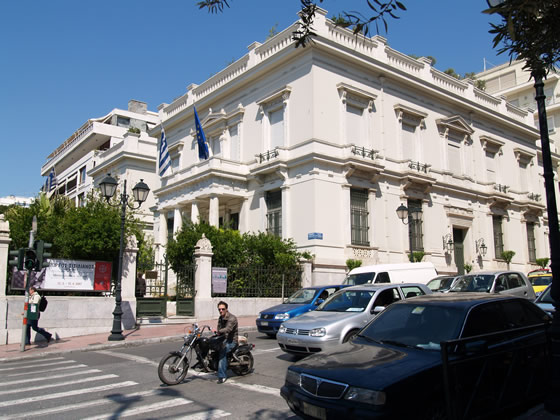
The Byzantine Museum
The Byzantine Museum was fonded in 1914 is one of the National Museums of Greece. Since 1930 it has been housed in the fine "Ilisia" building complex, erected near the river Ilisios in 1848 by the architect Stamatios Kleanthis for Sophia de Marbois the Duchess of Piacenza. There is a unique collection of icons ,sculptures , wall paintings, jewellery and other works of minor art from the 4th to the 19th century.
The National Gallery of Art
The Gallery was initially housed in a small area of Athens in the Technical University main building, where it remained until the outbreak of war in 1939. Substantial donations by Greek patriots as well as purchases continued to enrich the collections of the National Gallery. Its merger with the Alexandros Soutzos Estate in 1954, through the initiative of the then director Marinos Kalligas, contributed decisively to its development. The National Gallery, however, remained in effect homeless until 1976, leading a nomadic life, when the current building, begun in 1964, was completed and inaugurated, based on the designs of the architects professors Pavlos Milonas and Dimitris Fatouros.
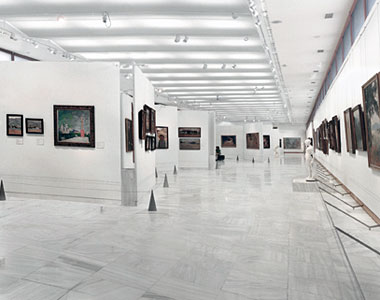
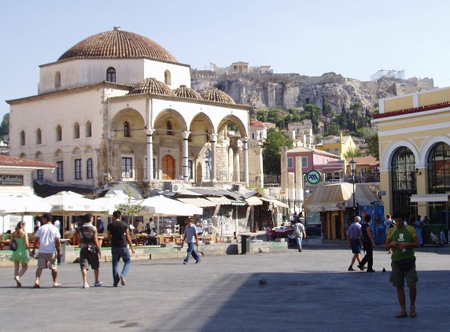 Monastiraki
MonastirakiMonastiraki is the place that most of all represent tradition and tourist sightseeing at the same time. It’s placed under the shadow of Acropolis at the South West section of the magisterial Sacred Rock and next to the Ancient Market and Attalos loft. Monastiraki is famous for the flea market and it is a great place for a Sunday morning walk in Athens. An early visit in the morning will help as later on the crowd becomes impossible and there are tables available at the many cafes adn restaurants for a drink or a snack.
National Archaeological Museum
It is the most important archaeological museum in Greece and one of the richest in the world concerning ancient Greek art. Its collections are representative of all the cultures that flourished in Greece. The construction of the museum begun in 1866 and completed in 1889 with the gradual addition of the west wing in 1874, of the north in 1881, of the south in 1885 and finally of the east wing. The building was erected in a large plot donated by Helen Tositsa, with the financial support of Demetrios and Nicolaos Vernardakis, the Archaeological Society and the Greek state.
Tickets for the National Archaeological Museum
7 Euro
Museum Hours:
Monday 13.00-19.30 (1pm-7:30pm) Tuesday-Sunday 08.30-15.00 (8:30am-3pm)
Museum Telephone:00 30 210 8217717 or 00 30 210 8217724
Museum Email:protocol@eam.culture.gr
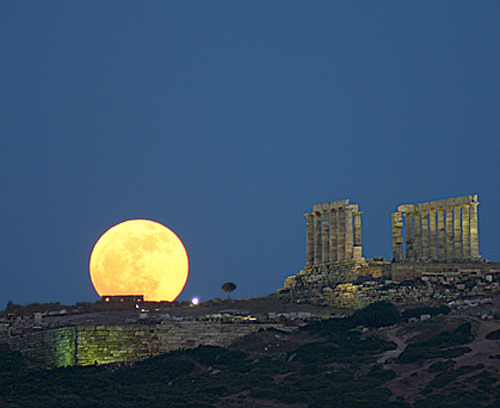 Poseidon Temple
Poseidon TempleThe sanctuary of Poseidon at Sounion is one of the most important sanctuaries in Attica. Sporadic finds point to the conclusion that the site was inhabited in the prehistoric period but there is no evidence of religious practice in such an early date. "Sounion Hiron" (sanctuary of Sounion) is first mentioned in the Odyssey, as the place where Menelaos stopped during his return from Troy to bury his helmsman, Phrontes Onetorides. The finds of the 7th century B.C. are numerous and proove the existence of organized cult on two points of the promontory: at the southern edge where the temenos of Poseidon was situated, and about 500 m. to the NE of it, where the sanctuary of Athena was established.
See more on
http://www.go-greece-vacations.com/greek-islands.html




In the 1970s Greeks brought in the islamosoviet terrorist bases, after Marchessini denounced NATO Mediterranean bases. Greeks have always harbored islamosoviet terrorists. In the 1800s, when Greece was always bankrupt, foreigners were always at risk from Klephth Brigands, a few of which were guillotined for show. Greek Ponzi fourfold Eurodefecit boasts Trojan Horse Perfidy, Klephth Brigandage. Instead of blaming environmetalists for fires and socialists for deficits, jealousy driven soviet faith seeks scapegoats. Ancent Greeks reduced consumption to help the environment through infanticide and sodomy. Palamite Zealotes massacred Thessalonian aristocracy in preparation for Cantacuzene usurpation via hesychast hyperventilatory hallutination. This soviet socialism motivated Anatolian farmers to embrace Turks in the 1400s to avoid redistributative taxation and then for liberated mainlanders to migrate to Smyrna in the 1800s. Greece was only euronation not to vote for 1947 Israel creation.
ReplyDelete